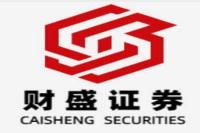破净银行股的价值重估:政策利好下的投资机遇与风险分析
关键词:破净银行股,银行板块,市值管理,估值修复,资产质量,投资机遇,风险分析,政策利好,化债
元描述: 深入探讨破净银行股的现状、政策影响及未来走势,分析投资机遇与风险,为投资者提供全面、专业的投资参考,涵盖市值管理、资产质量改善、化债等关键因素。
This ain't your grandpappy's banking sector! Recent market activity has sent shockwaves through the financial world, with a significant portion of A-share listed banks trading below their net asset value (NAV) – a phenomenon known as "破净" (pò jìng) in Chinese. This isn't just some minor fluctuation; we're talking about a whopping 39 out of 42 listed banks currently languishing in this undervalued territory. But hold on to your hats, folks, because a seismic shift might be underway. The China Securities Regulatory Commission (CSRC) recently dropped a bombshell: new guidelines on market value management. This isn't just window dressing; it's a clear signal that the powers that be are actively looking to address this long-standing issue. This means a potential game-changer for investors savvy enough to navigate this complex landscape. Are you ready to uncover the hidden potential within this seemingly risky sector? Let's dive deep into the heart of the matter, exploring the intricacies of this market movement, analyzing the implications of recent policy changes, and identifying both the tantalizing opportunities and the inherent risks involved in investing in these undervalued banking giants. We'll cut through the jargon, offering clear, concise, and actionable insights backed by real-world experience and reputable sources. This isn't just another financial news piece; it's your roadmap to understanding and potentially profiting from the unfolding drama in the Chinese banking sector. Get ready to ride the wave!
破净银行股:现状与挑战
The current predicament of numerous Chinese banks trading below their NAV is a complex issue with deep roots. For years, a confluence of factors – sluggish economic growth, rising non-performing loans (NPLs), and lingering concerns about local government financing vehicles (LGFVs) – have weighed heavily on investor sentiment. This resulted in a significant undervaluation, leaving many investors hesitant to jump in. Historically, the banking sector has been viewed as a relatively safe, low-return investment. The current situation challenges this perception, presenting both significant risks and unexpected opportunities.
The sheer number of banks trading below NAV paints a stark picture. This isn't simply a few outliers; it's a systemic issue reflecting broader economic anxieties. However, the recent CSRC guidelines signal a potential turning point. The emphasis on value enhancement plans and transparent reporting suggests a move towards greater market accountability and a proactive approach to addressing market inefficiencies.
Key Challenges:
- High NPL Ratio: While official numbers might be somewhat sanitized, the reality is that many banks are grappling with a substantial volume of non-performing loans. This directly impacts profitability and erodes investor confidence.
- LGFV Risk: The financial health of LGFVs remains a major concern. Any significant defaults could trigger a cascade of negative consequences for the banking sector.
- Economic Slowdown: China's economic growth has slowed in recent years, impacting the overall profitability of banks and increasing the risk of loan defaults.
- Regulatory Uncertainty: Changes in regulatory frameworks can create uncertainty for investors and affect the operational efficiency of banks.
市值管理新规:利好与影响
The CSRC's new guidelines on market value management are a significant development. These guidelines aren't just a suggestion; they represent a clear mandate for listed companies, particularly those persistently trading below NAV, to actively pursue strategies to improve their valuation. This includes developing comprehensive value enhancement plans and providing detailed updates on their progress.
Positive Impacts:
- Increased Transparency: The requirement for detailed reporting on value enhancement efforts will increase transparency and accountability. This is a major step towards restoring investor confidence.
- Proactive Value Creation: The guidelines encourage proactive strategies for improving profitability and efficiency, leading to potential long-term value creation.
- Enhanced Investor Confidence: The clear signal that regulators are actively addressing the issue of undervaluation should help boost investor sentiment and attract capital back into the sector.
- Potential for Restructuring: The pressure to improve valuation might lead to necessary restructuring and consolidation within the banking sector, ultimately strengthening its overall financial health.
Potential Drawbacks:
While many see this as a positive shift, there are potential downsides:
- Short-term focus: The emphasis on improving market value might lead to some companies prioritizing short-term gains over sustainable long-term value creation.
- Implementation Challenges: Successfully implementing value enhancement plans requires significant effort and expertise, which some companies may lack.
- Ineffective implementation: Even with well-intentioned plans, their effectiveness hinges on a myriad of factors ranging from management competence to macroeconomic conditions.
资产质量改善:化债与估值修复
A crucial aspect of improving the valuation of the banks is addressing the underlying challenges related to asset quality. The massive debt reduction program (化债, huà zhài) currently underway aims to alleviate the risks associated with LGFVs. This is a long-term process, but the progress made so far is encouraging. A reduction in NPLs and improved asset quality will directly translate into a healthier financial profile for banks, leading to a more favorable market valuation.
The success of the debt reduction initiatives is pivotal. It won't be a quick fix, but a clear demonstration of progress in addressing the risk should further boost investor confidence and unlock the true value of these undervalued assets. This is a marathon, not a sprint, and patience is key. However, initial signs are positive, suggesting a significant shift in the right direction.
Key Factors Contributing to Asset Quality Improvement:
- Debt Restructuring: The government's efforts to restructure LGFV debt, by extending maturities or lowering interest rates, are crucial in mitigating risk.
- Increased Transparency: Greater transparency in local government finances will help investors better assess the risks associated with LGFV debt.
- Improved Regulatory Oversight: Enhanced regulatory oversight of LGFVs will help prevent future debt accumulation and maintain financial stability.
投资机遇与风险分析
The current market situation presents a complex blend of risk and reward. While the potential for significant gains is undeniable, particularly if the policy initiatives bear fruit, investors must also be acutely aware of the inherent risks.
Investment Opportunities:
- Undervalued Assets: Many banks are trading significantly below their NAV, offering a potentially attractive entry point for long-term investors.
- Policy Support: The government's commitment to addressing the challenges facing the banking sector provides a strong tailwind.
- Potential for Value Appreciation: Successful implementation of value enhancement plans could lead to substantial appreciation in share prices.
Investment Risks:
- NPL Risk: The possibility of further increases in NPLs remains a significant concern.
- LGFV Risk: The ongoing challenges related to LGFVs continue to pose a downside risk.
- Economic Uncertainty: The global economic outlook and China's economic performance still add layers of uncertainty.
- Regulatory Changes: Unexpected regulatory changes could impact the profitability and valuation of these banks.
常见问题解答 (FAQ)
Q1: What is "破净" (pò jìng)?
A1: "破净" (pò jìng) refers to a situation where a company's stock price trades below its net asset value (NAV). This indicates that the market is undervaluing the company's assets.
Q2: Why are so many Chinese banks trading below NAV?
A2: A combination of factors, including slower economic growth, rising NPLs, and concerns about LGFVs, has contributed to the undervaluation of many Chinese banks.
Q3: What are the implications of the new CSRC guidelines?
A3: The new guidelines signal a proactive approach to improving market value management. They aim to increase transparency and encourage companies to implement strategies for improving their valuation.
Q4: How long will it take for the situation to improve?
A4: This is difficult to predict precisely. The improvement will depend on various factors, including the success of the debt reduction program and the overall economic environment. It's a long-term game.
Q5: Are there any safe banks to invest in?
A5: There is no such thing as a completely "safe" investment, especially in the current climate. Due diligence is critical. Focus on companies with strong management, transparent financials, and robust risk management strategies. Also, consider diversification.
Q6: What are the key factors to consider before investing?
A6: Before investing, thoroughly research the financial health of the bank, its NPL ratio, its exposure to LGFVs, and its overall management quality. Consider macroeconomic conditions and potential regulatory changes. Seek professional financial advice.
结论
The current situation in the Chinese banking sector presents a compelling case study in market dynamics and the interplay between policy, regulation, and investor sentiment. While the challenges are significant, the recent policy changes signal a potential turning point. The opportunity for significant gains exists, but careful consideration of the risks is crucial. Thorough due diligence, a long-term investment horizon, and a diversified portfolio are essential for navigating this complex landscape. Don't just jump in headfirst; proceed with caution and a well-informed strategy. The potential rewards are significant, but so are the potential pitfalls. This isn't a get-rich-quick scheme; it demands patience, research, and a robust understanding of the underlying factors at play. Remember, always consult with a qualified financial advisor before making any investment decisions.



